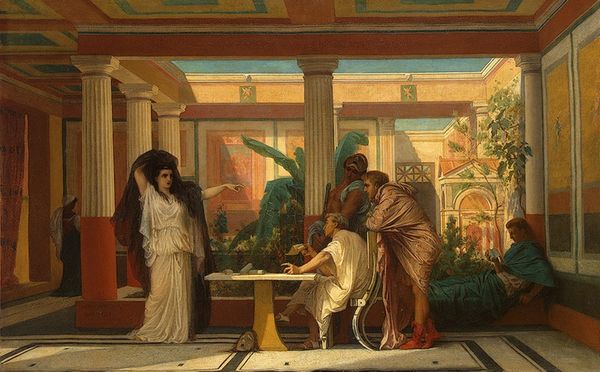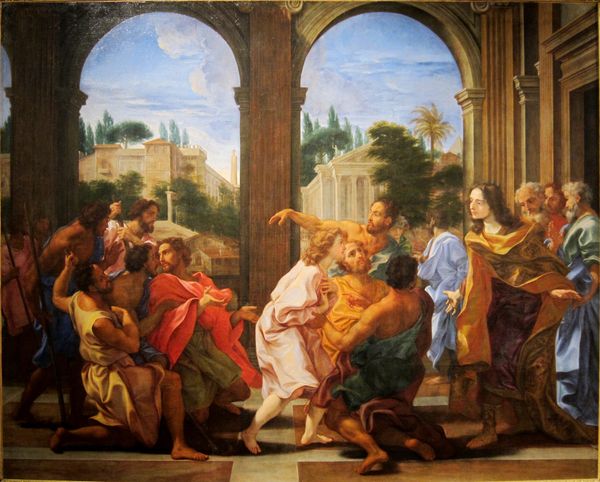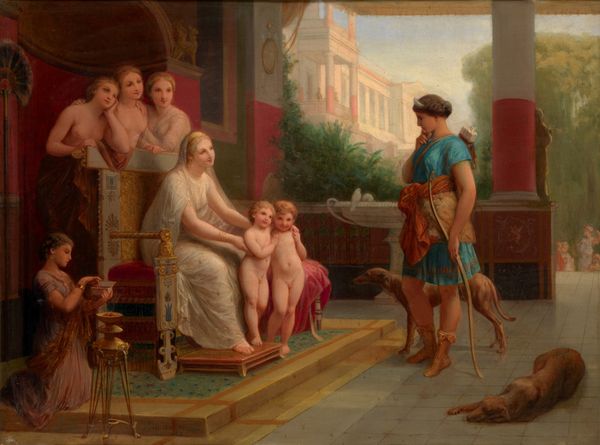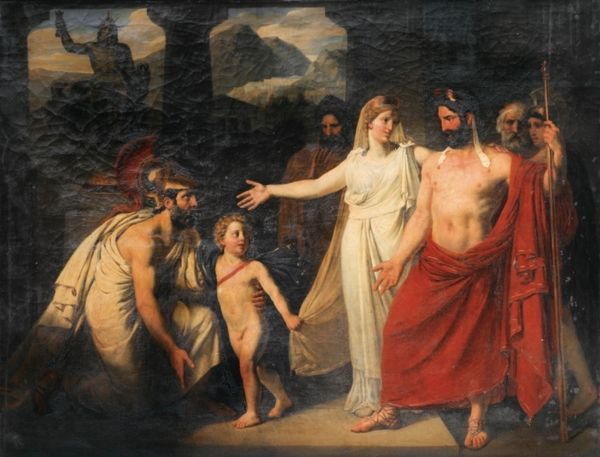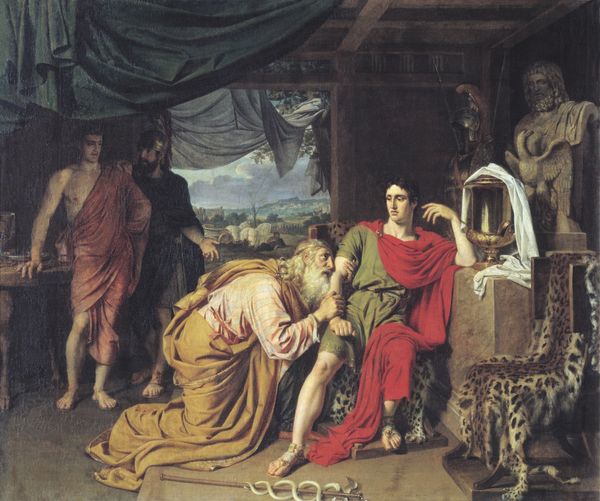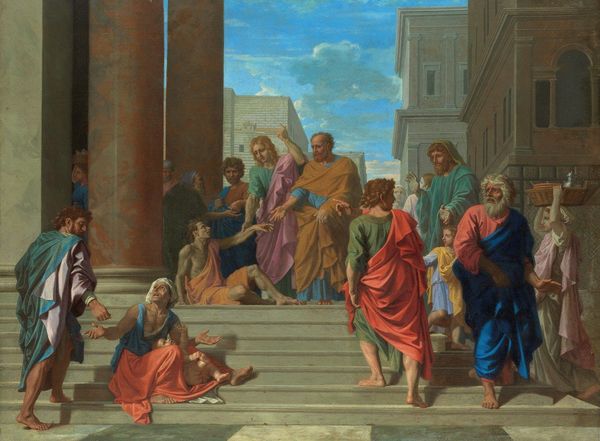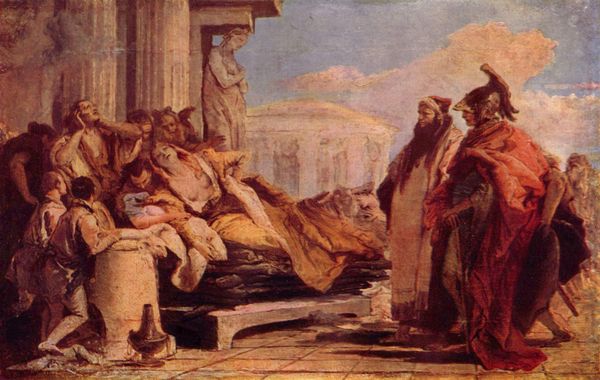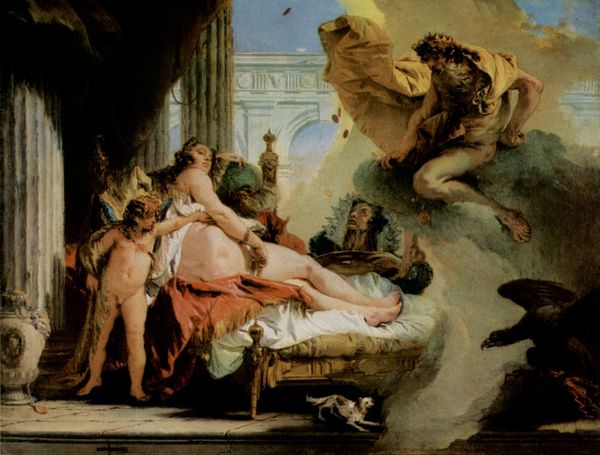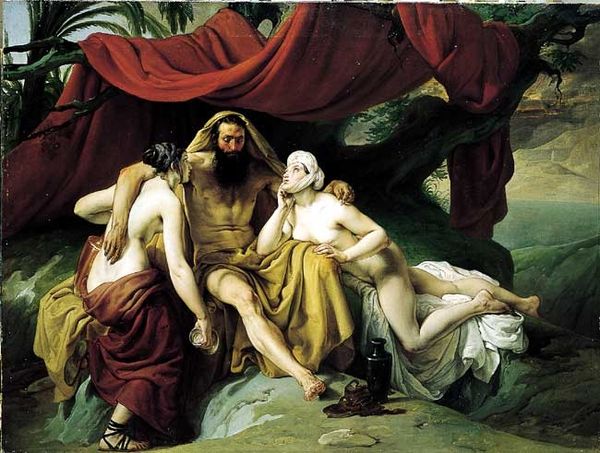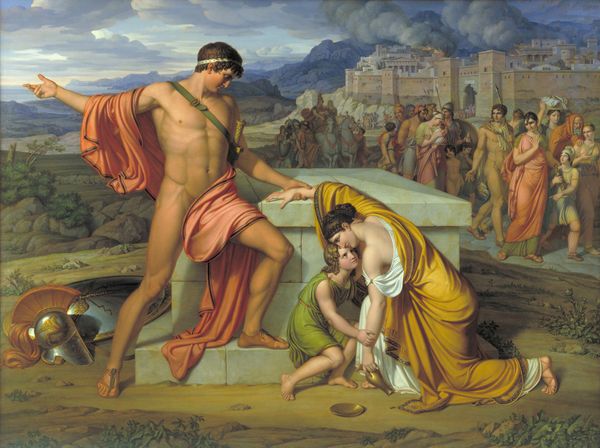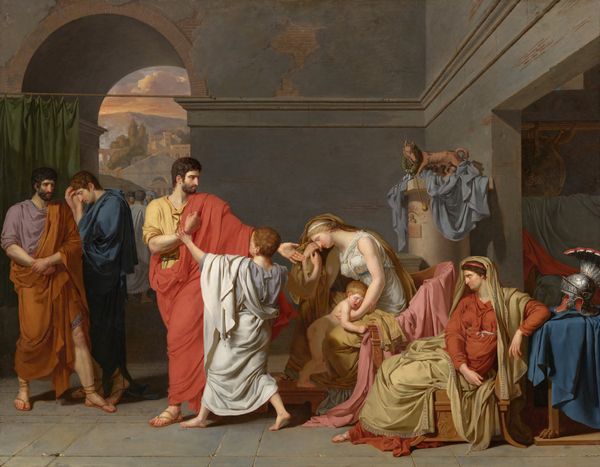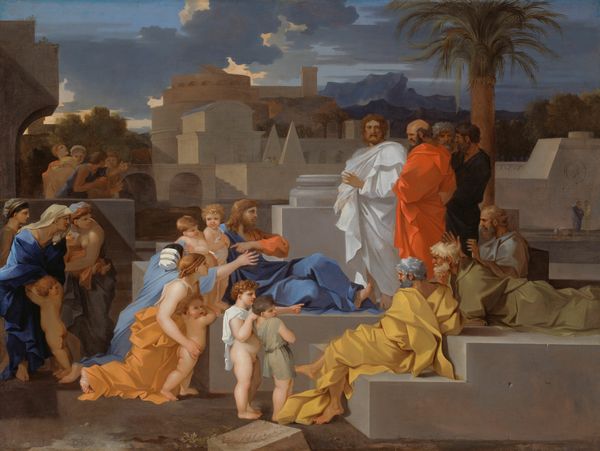
painting, oil-paint
#
portrait
#
gouache
#
neoclacissism
#
painting
#
oil-paint
#
figuration
#
oil painting
#
famous-people
#
ancient-mediterranean
#
mythology
#
genre-painting
#
history-painting
#
academic-art
#
nude
#
realism
Copyright: Public domain
Curator: This canvas evokes a lazy afternoon, bathed in warm light, though it's somewhat unsettling with its almost theatrical stillness. The figures seem posed. Editor: We are looking at “Socrates seeking Alcibiades in the House of Aspasia,” attributed to Jean-Léon Gérôme. Although the exact date of creation is not available, the style certainly points toward 19th-century academic painting, employing oil on canvas to achieve its highly polished finish. Curator: Absolutely. I'm particularly struck by the contrast between Socrates' solemn figure and the almost decadent languor of Alcibiades and his companions. It creates a powerful visual tension. It seems that Socrates is portrayed as out of place in this situation. Editor: The scene encapsulates a significant moment of cultural conflict in ancient Athens, portraying a challenge to moral and civic engagement. Gérôme’s choices are key. The composition frames Alcibiades as absorbed in hedonistic pursuits, embodying the societal decay Socrates sought to address through his philosophy. Aspasia, the woman famous for her influence in intellectual circles of the day, presides almost indifferently over the entire scenario. She looks like the matron of the house here. Curator: Indeed. The symbolism here feels multi-layered. Alcibiades, the young, handsome, and ambitious figure, represents the allure of pleasure and power, while Socrates, the older, wiser mentor, is there to call him back to virtue. This recalls similar depictions in painting. Editor: This clash isn’t merely between two individuals; it’s the conflict between personal gratification and public duty. Socrates’ mission to encourage responsible citizenry against a tide of decadence becomes even more pronounced if we view it from the period it was painted. What sort of moral lesson was it sending? How does a society see itself? These were burning questions for decades and generations. Curator: And to circle back to the original impression, that feeling of theatrical stillness is intentional. It’s a frozen moment of moral decision, rendered with the clarity and precision Gérôme's academic style demanded. Editor: So, while this artwork offers visual and symbolic layers, it invites deeper questioning of how it reflected socio-political ideals, its viewers, and also Gérôme's complex perspective on these characters and their time.
Comments
No comments
Be the first to comment and join the conversation on the ultimate creative platform.
